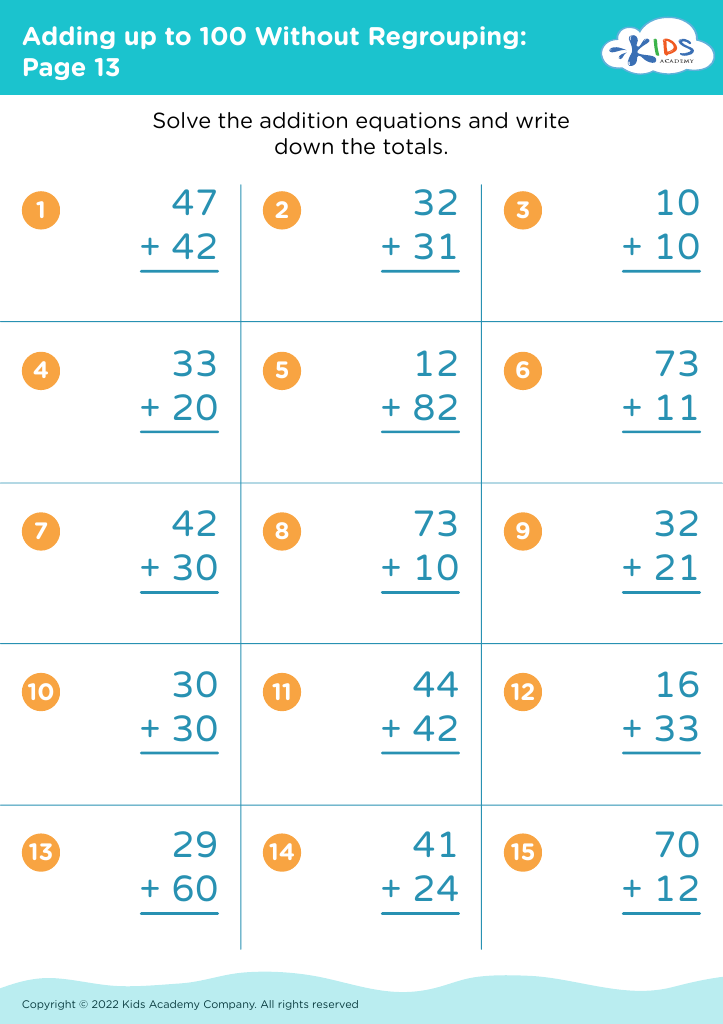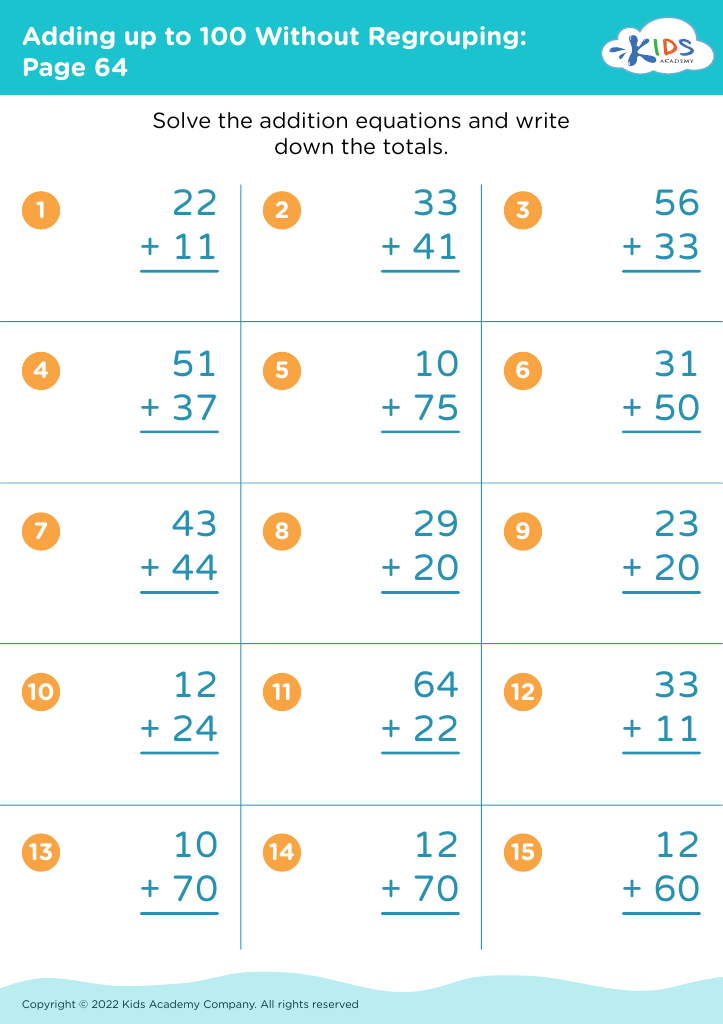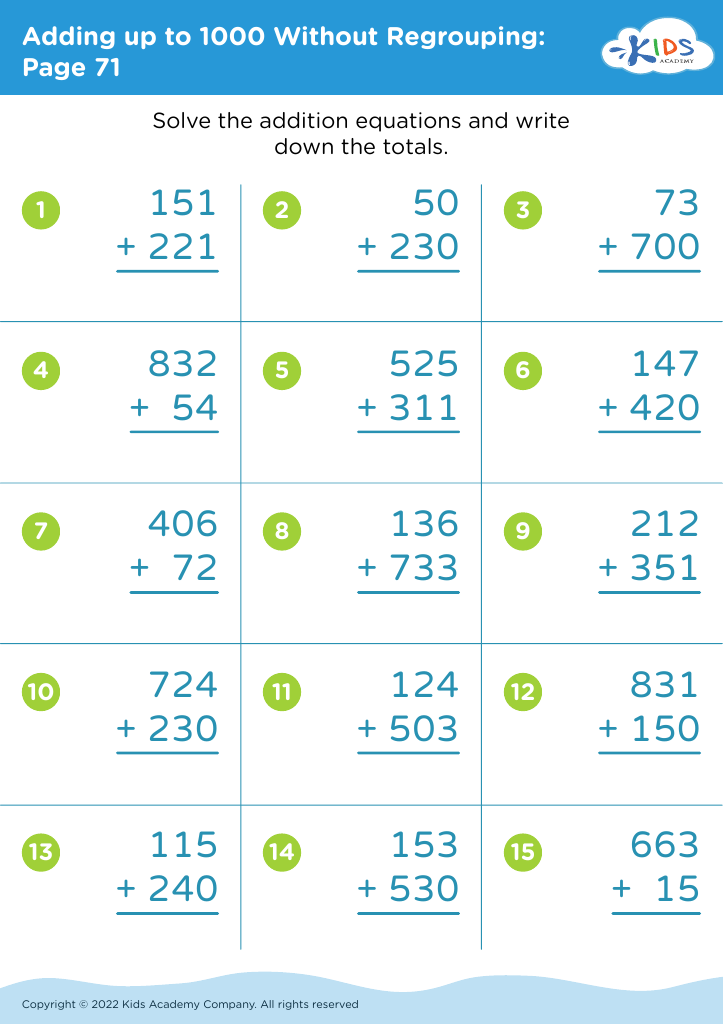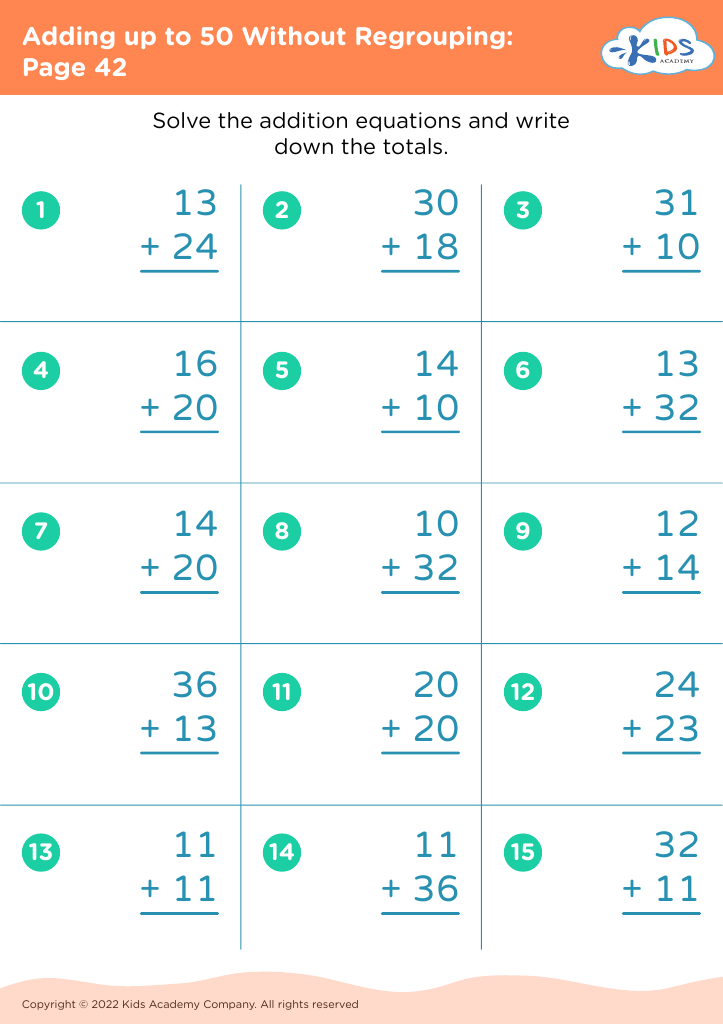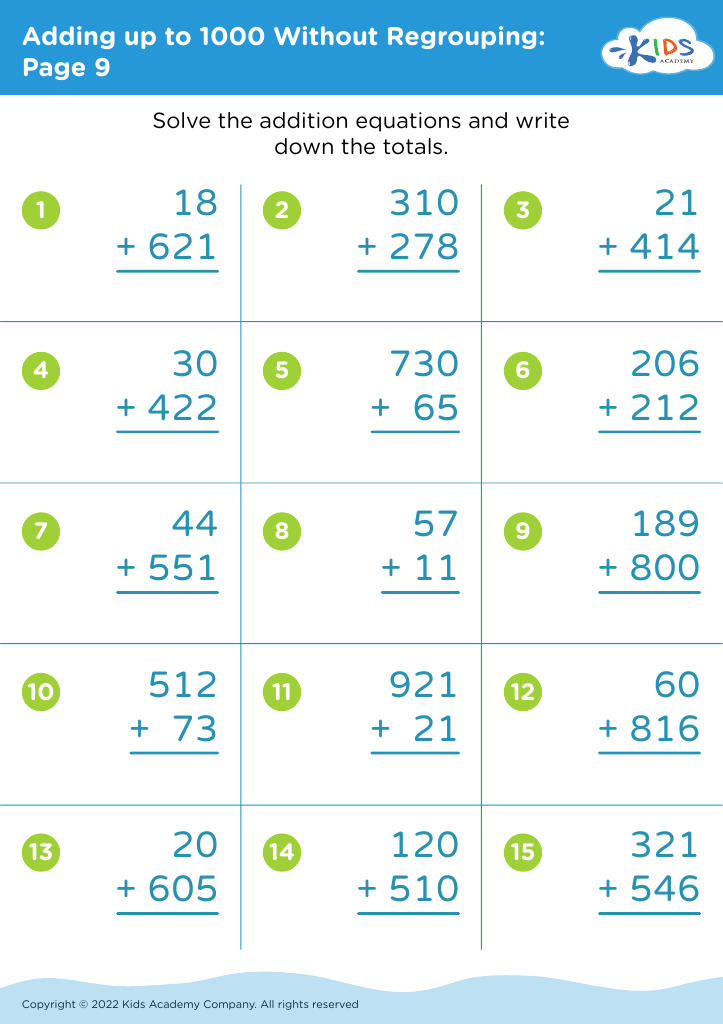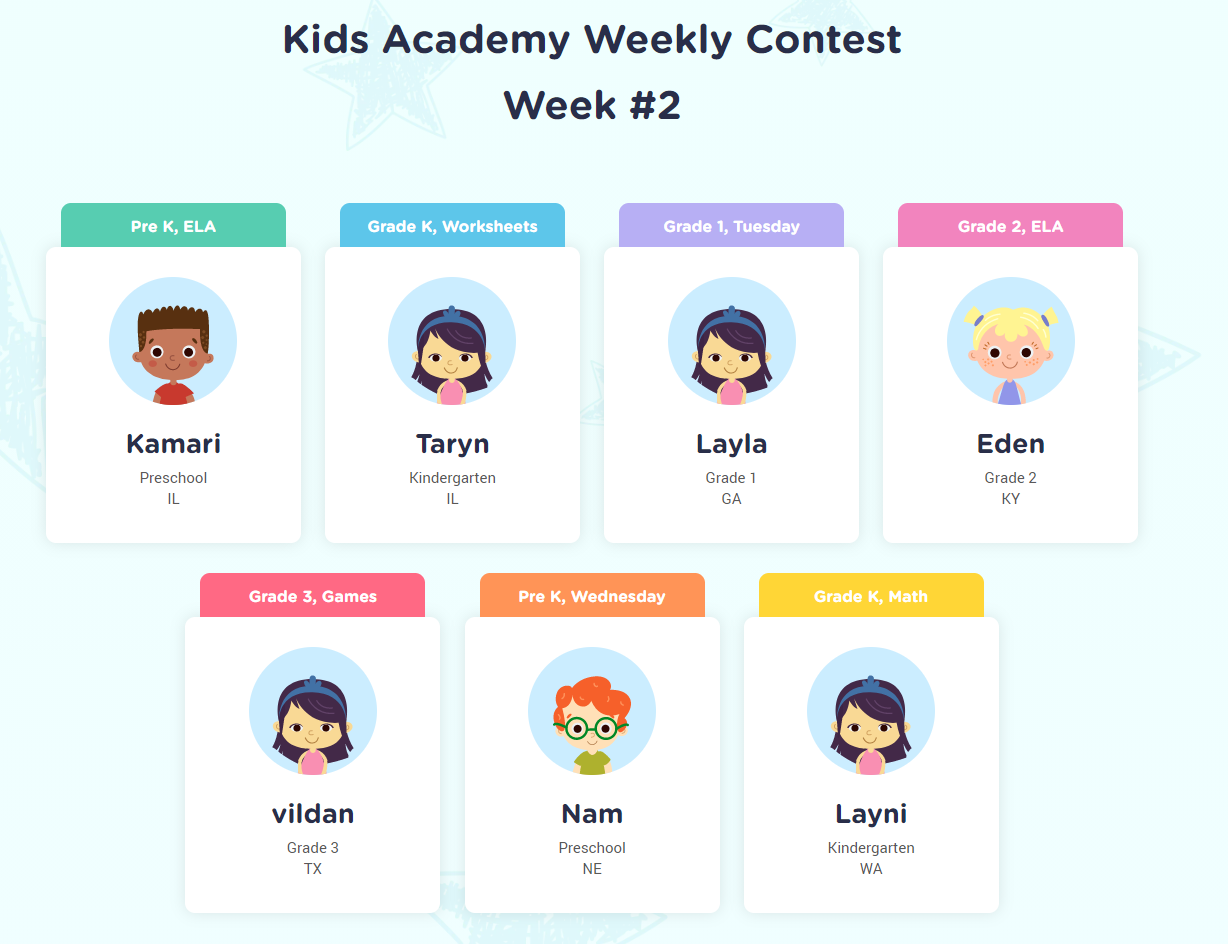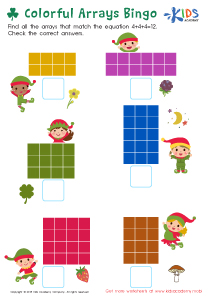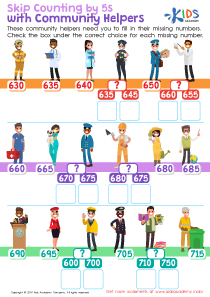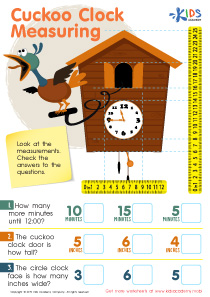Understand sequences Grade 2 Math Worksheets
5 filtered results
-
From - To
Discover engaging Grade 2 math worksheets focused on understanding sequences at Kids Academy! Our carefully crafted resources help young learners grasp the concept of patterns and sequences in a fun, interactive way. With a variety of exercises, your child will practice identifying, continuing, and creating number patterns, fostering critical thinking skills and boosting confidence in math. These worksheets are designed to align with second-grade standards, making them perfect for classroom use or homeschooling. Equip your child with the tools they need to succeed in math while enjoying a rich learning experience. Start exploring our worksheets today for endless educational fun!
Understanding sequences is a foundational component of mathematical education, especially for Grade 2 students. At this stage, children begin to recognize patterns and relationships that are vital for their overall cognitive development and problem-solving skills. Parents and teachers should care about this concept for several reasons.
Firstly, recognizing and understanding sequences helps children develop critical thinking skills. By identifying patterns in numbers, shapes, or events, students learn to predict outcomes and make logical connections, which is essential for more advanced math concepts later on.
Secondly, sequences are everywhere in everyday life. From organizing chores to understanding calendars and schedules, grasping the idea of sequences improves a child’s ability to navigate the world around them.
Additionally, this understanding fosters a sense of achievement and boosts confidence. As students successfully identify and create sequences, they become more engaged and motivated in their learning process.
Finally, a solid grounding in sequences lays the groundwork for future mathematical topics such as addition, subtraction, and algebra. In nurturing mathematical literacy, both parents and teachers play a critical role in ensuring students have the tools they need for academic success and lifelong learning.
